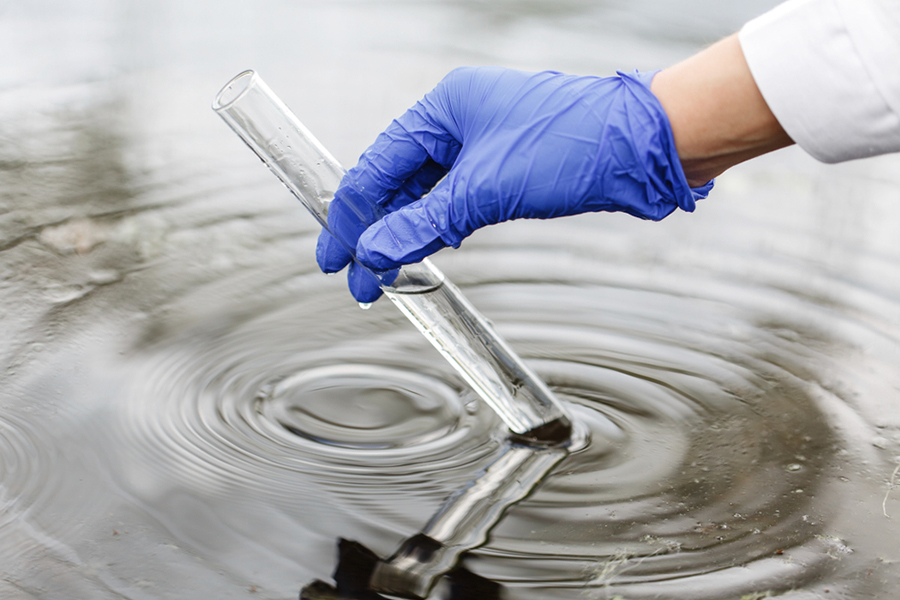Understanding Neurobehavioral Effects and Navigating Claims from Camp Lejeune Water Contamination

I’ve spent years delving into the complex world of environmental health issues, and one that’s caught my attention recently is the situation at Camp Lejeune. For those not in the know, Camp Lejeune is a military training facility in North Carolina that’s become the center of a major health scandal.
From the 1950s through the 1980s, people living or working at the camp were exposed to contaminated drinking water. Now, we’re seeing an alarming number of neurobehavioral effects tied to this exposure. Veterans and their families are stepping forward with claims, seeking compensation for the damage they’ve suffered.
In this article, I’ll be exploring the neurobehavioral effects linked to the Camp Lejeune water contamination. I’ll also delve into the claims process, shedding light on the struggles victims face while seeking justice. It’s a heavy topic, but it’s one that needs our attention.
Understanding Camp Lejeune Contamination
To comprehend the gravity of the situation at Camp Lejeune, it’s essential to delve deeper into the origin and causes of the water contamination. This marine corp base, home to thousands of military staff and their families, unknowingly turned into a toxically hazardous zone due to tainted drinking water.
From the 1950s through the 1980s, volatile organic compounds (VOCs) infiltrated the base’s water supply. These VOCs mainly included trichloroethylene (TCE), tetrachloroethylene (PCE), benzene, and vinyl chloride, all of which are considered harmful to human health. The contaminants were primarily leaked by base solvents and machine cleaners stored in unlined pits, posing a significant threat to the groundwater.
Not only did these chemicals seep into the water supply over an extended period, they were also found in concentrations up to 240 to 3400 times higher than what’s considered safe. The impact was instant and far-reaching, causing a plethora of neurobehavioral symptoms among those exposed to the contaminants.
As the crisis unfolded, it’s estimated that nearly one million people were exposed to the contaminated water. The affected individuals presented a variety of neurobehavioral effects, including mood swings, memory loss, cognitive deficits, sleep disorders, and even extreme conditions like Parkinson’s disease.
Understanding the magnitude of the contamination at Camp Lejeune and its hazardous implications is the first step in acknowledging the battles that veterans and their families continue to face today in pursuit of compensation for the harm inflicted. I don’t want to end, but the story of Camp Lejeune’s contamination doesn’t end here. That’s a tale for another section, where we take a closer look at the ongoing battle for justice.
Neurobehavioral Effects of Water Contamination
Diving deeper into the grim history of Camp Lejeune, it’s paramount we shed light on the severe neurobehavioral effects the volatile compounds in the water had on residents. Chronic exposure to trichloroethylene and benzene has been instrumental in impairing the cognitive functions of nearly a million individuals.
A primary concern in this ordeal is the evident impact on memory functions. Cognitive disorders such as memory lapses and forgetfulness were frequently observed in the affected individuals. More severe impacts manifested in mood fluctuations. These might seem trivial at first, but they bear significant long-term predicaments.
Delving into the more severe implications, experts noted symptoms that strongly indicate the onset of Parkinson’s disease. Along with this, numerous other health anomalies like kidney, liver, and lung conditions have been reported. These manifestations go beyond typical neurobehavioral effects, painting a bleak picture of the water contamination at the camp.
The evidence is supported by numerous independent studies and reports. For instance, a study published by the Agency for Toxic Substances and Disease Registry (ATSDR) provided alarming statistics. Here’s a quick look at some of these numbers:
| Affected Function | Percentage of Individuals |
|---|---|
| Memory Loss | 37% |
| Mood Swings | 29% |
| Parkinson’s Symptoms | 12% |
The takeaway here is the abhorrence of the impact the contaminated water has had on the residents of Camp Lejeune. It’s a painful chapter in the history of the camp that has left lasting impacts on veterans and their families alike. All this culminates into the pressing issue of the camp lejeune water claims – the ongoing struggle for justice and recompense. We’ll delve into this in the next section, focusing on the battle veterans and their families face in seeking due compensation.
Impact on Veterans and Families
The haunting repercussions of the water contamination at Camp Lejeune haven’t just plagued those who directly consumed the contaminated water but also resonated through the generations, impacting veterans and their families alike. In essence, this is not just about an individual’s struggle. It’s a family affliction echoed in the halls of every affected home.
Children of veterans exposed to the contamination have a significantly higher risk of facing neurobehavioral disorders. Studies revealed an alarming rise in occurrences of learning difficulties and attention deficit disorders among these children.
Veterans exposed to the polluted water at Camp Lejeune have been battling with the prolonged health effects and the strenuous process of seeking compensation for years. Notably, the struggle doesn’t end with the health complications. Veterans grapple with inflated medical bills, loss of income due to debilitating health conditions, and the psychological strain of dealing with bureaucratic red tape involved in the claims process.
A closer look at the afflictions faced by veterans and their families:
Cognitive Impairments:
Drastic reductions in memory capacity, inability to concentrate, and difficulty in learning new stuff.
Mental Health Issues:
High rates of depression, anxiety, and drastic mood alterations have become an everyday reality.
Medical Complications:
Increased ris- for Parkinson’s, kidney disease, liver conditions, and other organ-related health problems.
Financial Burdens:
Exorbitant medical expenses, loss of income, and an uphill battle for compensation.
The ripple effects of the Camp Lejeune water crisis reach far and wide, manifesting in unseen and sometimes, unfathomable ways. It’s a harsh truth that the veterans and their families bear a heavy cross, a burden forged by the very institution meant to safeguard their well-being.
Navigating the Claims Process
The maze that is the Camp Lejeune water claims process can often feel overwhelming. In my experience, understanding the intricacies of the system is key to a more successful navigation. Let’s dive right into the crucial steps.
Initially, the building blocks of a remarkable claim rest upon establishing a direct connection between the water contamination at the camp and a resulting illness. So, carry on hand thorough medical documentation. I’ve seen how detailed records significantly strengthen veterans’ claims.
- Providing evidence of having resided at Camp Lejeune during the contamination period.
- Collecting accurate medical records that reflect a diagnosis relating to one of the 15 diseases designated under the Camp Lejeune Act.
I must highlight that this no easy task.
Once the claim is ready for submission, it’s crucial to follow a specific filing protocol. The Department of Veterans Affairs (VA) have both online and mail-in options. Notably, these processes carry separate procedural steps, so veterans need to be familiar with both paths.
Efficiency becomes crucial during the waiting period. With the VA, process times vary greatly, making it difficult to plan. Veterans can, in the meantime, join support groups. There, they can share their experiences, and stay updated on any changes in the claims process.
Further support can come from legal professionals who specialize in VA claims. They can reduce the obstacles faced during this journey. I can’t stress enough the positive impact they can make, given their up-to-date knowledge of any legislative changes that might impact pending claims.
Lastly, all veterans should be prepared for the possibility of an initial denial. It’s a common occurrence in the VA system. It’s key to not lose heart but rather, arm oneself with additional evidence or seek professional advice to submit an effective appeal.
In the grand system of Camp Lejeune water claims, mastery is not achieved overnight. Patience is crucial, it’s a process–and a gritty one at that.
Seeking Justice for Victims
Embarking on the journey to justice can be a daunting task for victims of Camp Lejeune water contamination. It’s a process that calls for more than just filing papers; it’s about battling barriers, overcoming obstacles, and standing firm in the face of adversity. As such, informed navigation of the convoluted claims process stands out as a critical factor worth emphasizing.
One of the biggest hurdles for affected veterans is proving direct linkage between water contamination and resulting illnesses. To establish this connection, thorough medical documentation is paramount. These medical records should clearly denote the affected individual’s medical complications impacted by water contamination, particularly focusing on specified diseases related to the pollution. Armed with robust medical documentation, a claimant’s case not only strengthens, but also improves their chances of receiving a favorable verdict.
Proving residency during the contamination period is another crucial aspect of the claims process. Simply put, the affected veteran must demonstrate that they were residing at the Camp Lejeune military base during the period of contamination. Evidence could encompass a range of documentation – from military orders and housing records to testimonials and declarations.
The submission process itself presents an array of challenges. Working alongside the Department of Veterans Affairs, claimants must follow rigorous procedures and specific protocols. Despite the complexity of the process, there’s added comfort in knowing that there are support groups and legal professionals who can provide guidance every step of the way.
However, it’s essential for affected veterans to understand that the likelihood of initial denials is high. Yet, this does not signal the end of the journey. Instead, armed with patience, determination, and documented evidence, victims must remain unwavering in their pursuit of justice.
Despite the complexities involved in the fight for justice, the process remains vital for victims of the Camp Lejeune water contamination. Staying informed, preparing thoroughly, tackling obstacles head-on, and never giving up are the cornerstones to achieving justice and, ultimately, healing. Consequently, navigating the claims process with confidence, tenacity, and informed guidance makes securing justice a reachable journey.






